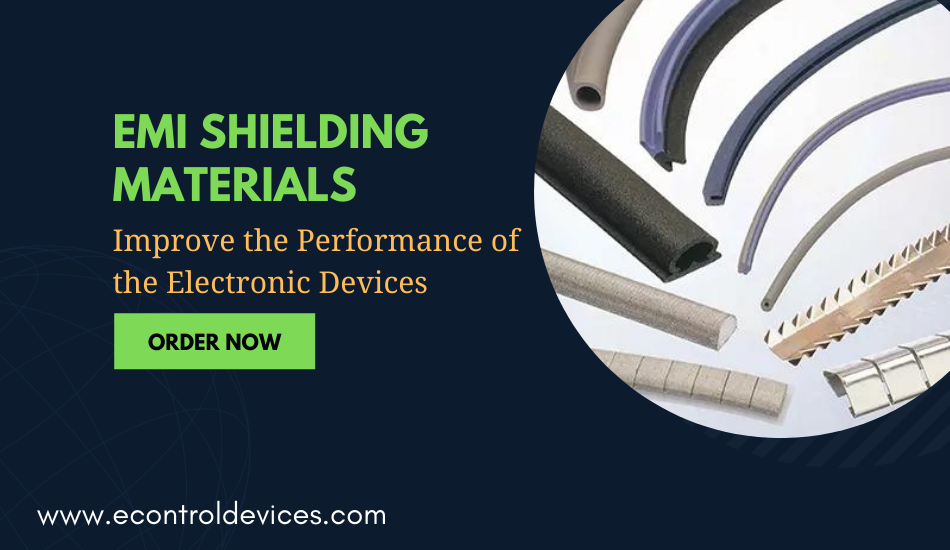Electronic devices emit some magnetic energy by radiation or conduction, known as electromagnetic interface or EMI. The EMI can interrupt any other electronic device nearby and impact its performance.
In some cases, it can reduce the reliability and accuracy of nearby electronic devices. To prevent this, the EMI shielding materials are used in electronic devices to reduce the impact of EMI. This article covers the challenges regarding the EMI and EMI shielding materials and EMI shielding products.
What is EMI Shielding?
The main reason for interface or interruption is the radio frequency, also called radiofrequency interface or RFI. The RFI is most common in the air navigational or avionics field.
There are some sources of EMI, like the lights and solar magnetic or arc welder. The power quality also interrupts the workings, like if there is a power surge or spike in voltage current and external electrical noise.
The electromagnetic interface directly affects the range of signaling and the range of devices like IoT-based devices like sensors and other monitoring devices.
The EMI shielding materials shield the devices from an electromagnetic interface or radio waves. It prevents the signal from amplifying and reaching out to nearby devices. The EMI shielding products can be placed with IC chips and other active components of the device between PCBs.
The Need for EMI Shielding
The EMI affects the electronic device and other nearby electronic components and parts. The data processing and communication features get heavily affected due to EMI leakages. The EMI can affect your devices in ways such as:
- It can jam and distort the signals
- The communication devices lose their ability to transmit and receive the signals
- EMI leakage can result in electronic circuit failure
- It also reduces the life cycle and performance of electronic systems
- It causes electric shock and burns while using the device
How do EMI Shielding Products work?
The EMI shielding works with the help of metallic screens made out of certain materials that absorb the leaking EMI present in the air. This metallic shielding covers the sensitive area or component of the transmitting device or electronic.
This metallic screen will soak up the interface, and the process generates some amount of current. This current is also managed by using a ground connection or virtual ground plate.
If the metallic screen soaks up the interface, the sensitive parts or circuitry stay protected and kept clean, maximizing the accuracy and reliability of the electronic device.
For example, we can take a smartphone. Smartphones use EMI shielding gaskets that protect the processor and sensitive transmitter that displays the information on the screen.
Which Material is Best for EMI Shielding?
Several materials are used for the same purpose, but the application and other related processes make all the difference. The material will be best only if suitable for that particular process. Various metals are used for EMI shielding products, and in some applications, silicone gaskets are used too.
Nickel, silver, steel, etc., or a mix of metals is used for making such products. Let’s see some more common metals used to make EMI shielding products and their specifications.
Pre-Tin Plated Steel
This is a low-cost material that is perfect for low-cost applications. This is the best material for processes with EMI frequency in kHz. This prevents rusting and corrosion, and it has a suitable surface for soldering during assembly.
Copper Alloy 770 / Nickel Silver
Copper is the most widely used EMI material because it can absorb magnetic and radio waves. It is a combination of copper, nickel, and zinc alloy that is popular for its properties of staying corrosion-free.
The base materials are perfect and do not require an additional coating to make them corrosion-proof, and it is beautiful for soldering purposes. This material is used for an application that has an EMI frequency from kHz to GHz.
Its best example can be the MRI process in the medical sector. Due to its ability and feature of permeability level of 1, it is desired in this process.
Copper
It is highly effective for magnetic and electrical waves and reliable for EMI shielding in healthcare facilities and processes like MRI and other diagnostic machines.
This is a very versatile material, and it can be used in combination with brass alloy, phosphorus bronze, and beryllium copper. It is highly conductive and relatively expensive than copper alloy and pre-tin plated steel. It is used in applications like batteries and springs.
Aluminium
This is the best option for a vast range of applications. Aluminium is a non-ferrous metal that is highly conductive too. Also, its weight is significantly less considering its strength which makes it an ideal choice.
Its conductivity level is higher than copper; however, it needs attention in other areas due to its oxidizing ability. It cannot be soldered with other metals, limiting its application areas.
How to Implementing EMI Protection
We have understood the importance of EMI shielding and know the ideal metals and mix of metals that can be used as EMI shielding products but still, you can still face challenges when applying the same.
Several regulations needed to be compiled to protect, so before implementing the EMI materials, remember the below points:
Always integrate the EMI shielding products into the design of the circuit. It cannot be added afterward, unlike thermal management solutions.
Use the EMI shielding products nearer to the source to minimize the effect and stop the leakage.
Design your device effectively and strategically locate the sensitive and exposed components away from the source of EMI.
Conclusion
The EMI shielding materials are used in several forms to help create successful barriers that prevent solid electromagnetic waves from interfering with their electronic properties.
Several techniques and materials are used to create effective EMI shielding products like EMI shielding gaskets and many more. The devices need good protection against EMI leaking to keep performing accurately and give reliable results.

